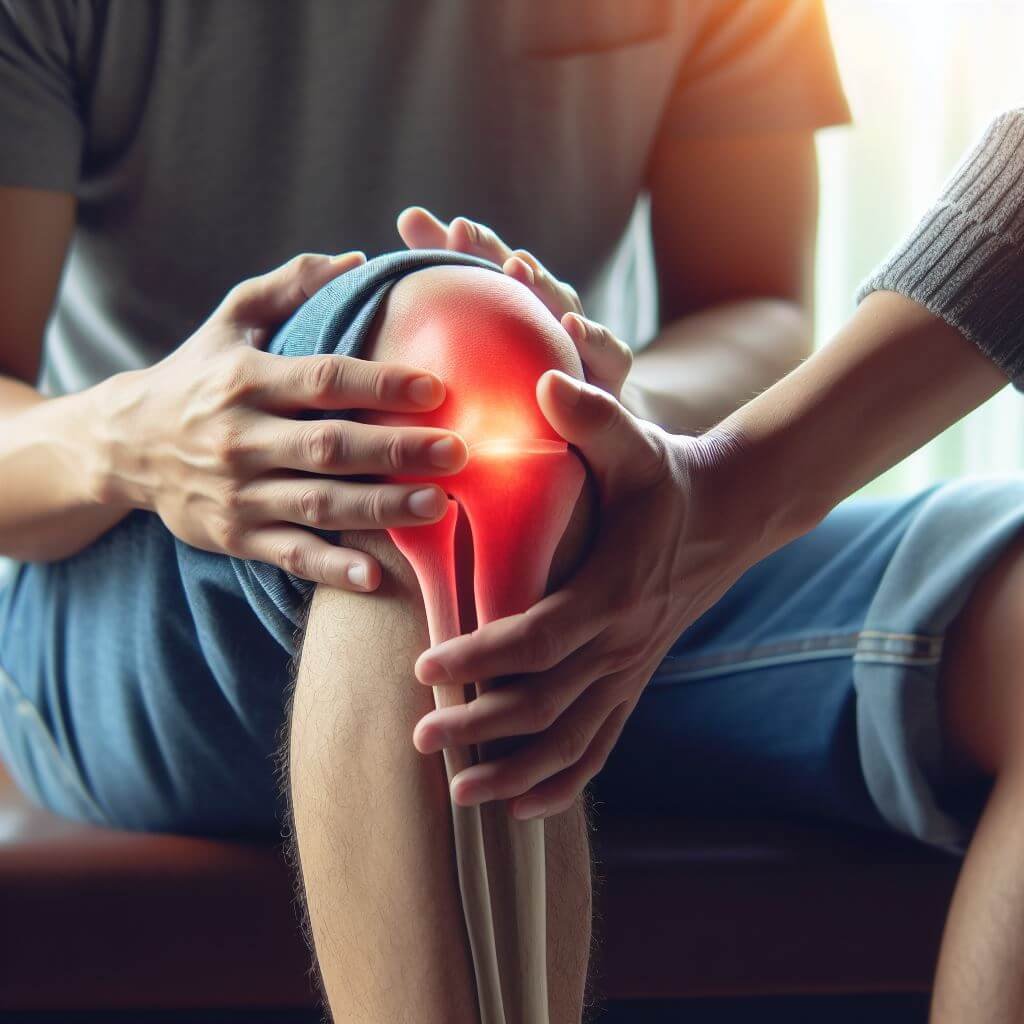
Dr. Sanjay Barik
Knee & Shoulder Surgeon
Meet Our Doctor

Dr. Sanjay Barik
Orthopedic and Joint Replacement Surgeon
Dr. Barik's Orthocare Clinic
- MBBS
- MS - Orthopaedics
Knee Pain Treatment In Nagpur
Knee pain is pain or discomfort felt in or around the knee joint.
A joint is a place in the body where two bones meet. The knee joint connects the thigh and lower leg. This is where the femur (femur) and shin bone (tibia) meet.
The knee is the largest joint in the body and absorbs and supports much of your body weight as you move. This is why it is one of the most commonly injured joints. Knee pain can be a temporary, short-term problem, or it can be a chronic (long-term) problem that requires diagnosis and treatment by a doctor.

There many types of Knee Pain Treatments
Such as Surgical and non Surgicals
In surgicals treatments, various surgeries can be carried according to the diagnoising
1. Knee Replacement Surgery: Knee replacement surgery, or knee arthroplasty, is often recommended for people who suffer from severe knee pain or limited mobility, primarily due to osteoarthritis, a common degenerative joint disease.
2. Arthroscopy: A type of keyhole surgery that can be used to diagnose and treat a variety of knee problems. Arthroscopic treatment includes:
- Debridement
- Cartilage Repair
- Trimming Damaged Cartilage
- Removal of Loose Debris
- Cleaning the Medial Side of the Knee
3. Osteotomy: A surgery that removes a small wedge of bone or adds a small wedge of natural bone graft.
4. Radiofrequency ablation (RFA): Controls pain by destroying the sensory nerves that carry pain signals from the knee to the brain.
The Non Surgicals Treatment includes
1. Bracing: Bracing refers to the use of supporting devices, such as knee supports, to provide stability and relieve pressure on affected joints. Depending on your specific condition and level of support needed, different types of braces may be recommended. These are often used to treat instability, reduce pain, and improve overall joint function.
2. Injections and Injections: Injections are commonly used to reduce knee pain and inflammation. Corticosteroid injections can help reduce inflammation and relieve pain, especially in conditions such as arthritis. Hyaluronic acid injections, also called viscosity supplementation, can be used to improve joint lubrication and reduce friction. Platelet-rich plasma (PRP) injections use a patient’s own blood components to promote healing.
3. Nutraceuticals: Nutraceuticals refer to dietary supplements that have potential therapeutic effects. When it comes to knee health, supplements such as glucosamine and chondroitin sulfate are often used to support joint function and may slow the progression of conditions such as osteoarthritis. The purpose of these supplements is to provide the necessary building blocks for cartilage repair and maintenance.
4.Physical Therapy: Physical therapy is an important part of the nonsurgical treatment plan. These are customized exercises and stretches designed to improve joint mobility, strengthen the muscles around the knee, and improve overall stability. Physical therapists work closely with patients to develop individualized programs that address specific symptoms and help reduce pain and improve function.
5. Weight-bearing exercise (cycling and walking): Weight-bearing exercise plays an important role in maintaining joint health and improving overall fitness. Activities like cycling and walking are low-impact exercises that strengthen muscles, promote joint mobility, and help manage weight. These exercises are especially beneficial for people with knee problems, as they provide cardiovascular benefits without putting undue stress on the joints


